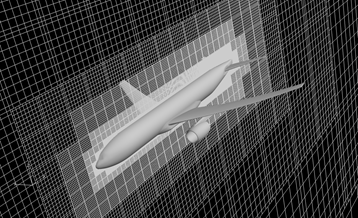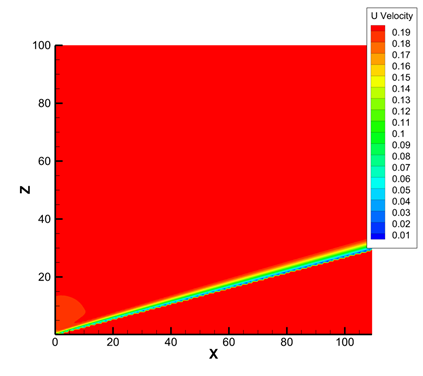Post-K Priority Issue 8D: Research and development of core technology to innovate aircraft design and operation
JAXA Supercomputer System Annual Report April 2016-March 2017
Report Number: R16E0067
- Responsible Representative: Noriaki Ishioka(Department of Interdisciplinary Space Science)
- Contact Information: Ryoji Takaki(ryo@isas.jaxa.jp)
- Members: Ryoji Takaki, Taku Nonomura, Seiji Tsutsumi, Yuma Fukushima, Soshi Kawai, Yuki Kawaguchi, Ikuo Miyoshi
- Subject Category: Basic Research(Design technique,other )
Abstract
We develop a high-speed/high-precision computational program using a quasi-first principle method, which can faithfully reproduce the actual flight environment to understand the true nature of fluid phenomena. Specifically, we develop a high-precision compressible flow solver with geometric wall models and LES (Large Eddy Simulation) wall models based on hierarchical, orthogonal and equally spaced structured grids.
Goal
As a Post-K Priority Issue 8D, we establish core technologies to resolve important issues related to the design and operation of aircraft, and achieve a higher level of efficiency, high performance, and safety improvements.
Objective
Goal is to develop a numerical simulation technology realizing the evaluation of design issues during the initial stages of design phase, that could only be evaluated during the downstream phase of development like actual flight tests. We also aim to realize precious prediction of low-speed stall and transonic buffet phenomena, a new flight-dynamics model and an advanced flight-control model by using this advanced technology.
References and Links
N/A
Use of the Supercomputer
JSS2 is used for a platform to develop our computational program. Moreover, various calculations are conducted on JSS2 for validation and verification of the developing program.
Necessity of the Supercomputer
JSS2 is required because JSS2 has a same architecture as post-K, which is a target machine of our program, and verification and validation calculations become large scale computations.
Achievements of the Year
A prototype program using hierarchical, orthogonal and equally spaced structured grid method is developed. Flat plate laminar boundary layer flows and vortex advection flows are calculated using the developed program for the verification and validation.
Publications
N/A
Computational Information
- Parallelization Methods: Hybrid Parallelization
- Process Parallelization Methods: MPI
- Thread Parallelization Methods: OpenMP
- Number of Processes: 2-64
- Number of Threads per Process: 16
- Number of Nodes Used: 1-10
- Elapsed Time per Case (Hours): 0.833-10
- Number of Cases: 300
Resources Used
Total Amount of Virtual Cost(Yen): 19,235,630
Breakdown List by Resources
| System Name | Amount of Core Time(core x hours) | Virtual Cost(Yen) |
|---|---|---|
| SORA-MA | 11,628,782.50 | 18,983,099 |
| SORA-PP | 418.07 | 3,569 |
| SORA-LM | 0.00 | 0 |
| SORA-TPP | 0.00 | 0 |
| File System Name | Storage assigned(GiB) | Virtual Cost(Yen) |
|---|---|---|
| /home | 2,652.32 | 25,019 |
| /data | 9,969.45 | 94,042 |
| /ltmp | 5,392.09 | 50,863 |
| Archiving System Name | Storage used(TiB) | Virtual Cost(Yen) |
|---|---|---|
| J-SPACE | 25.60 | 79,036 |
Note: Virtual Cost=amount of cost, using the unit price list of JAXA Facility Utilization program(2016)
JAXA Supercomputer System Annual Report April 2016-March 2017




